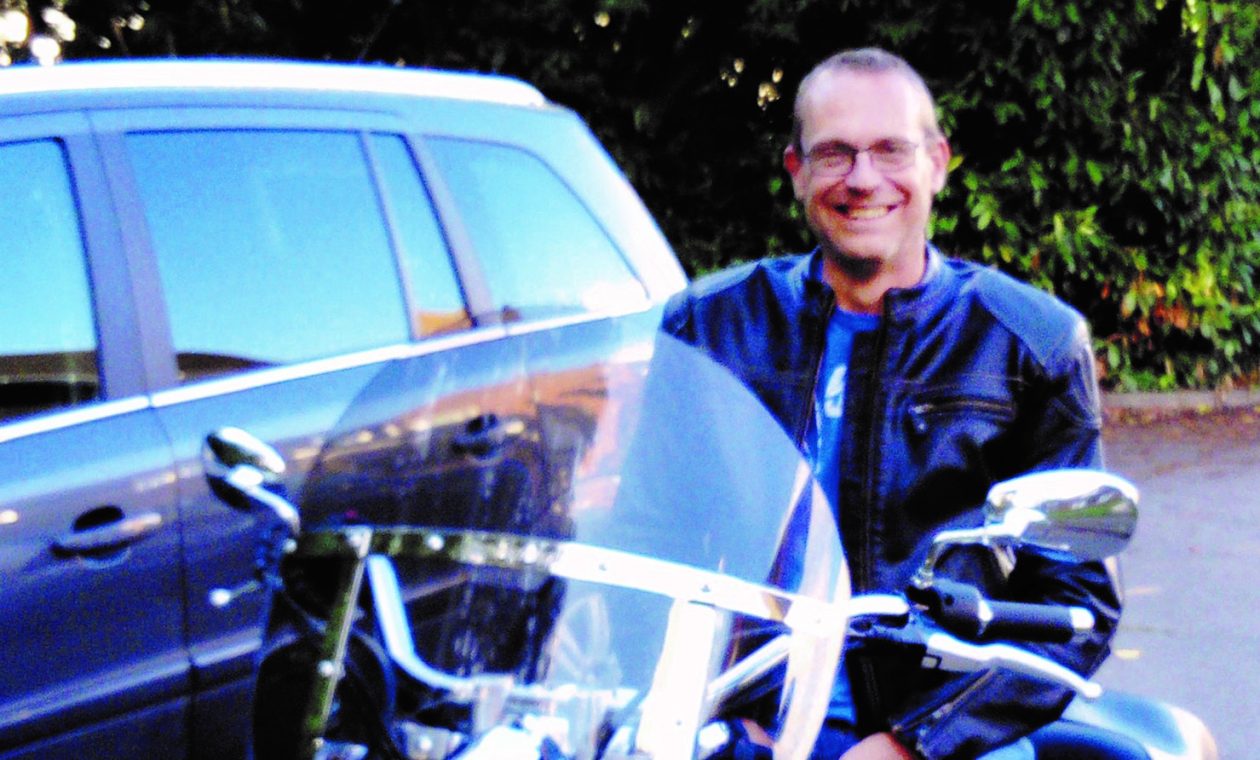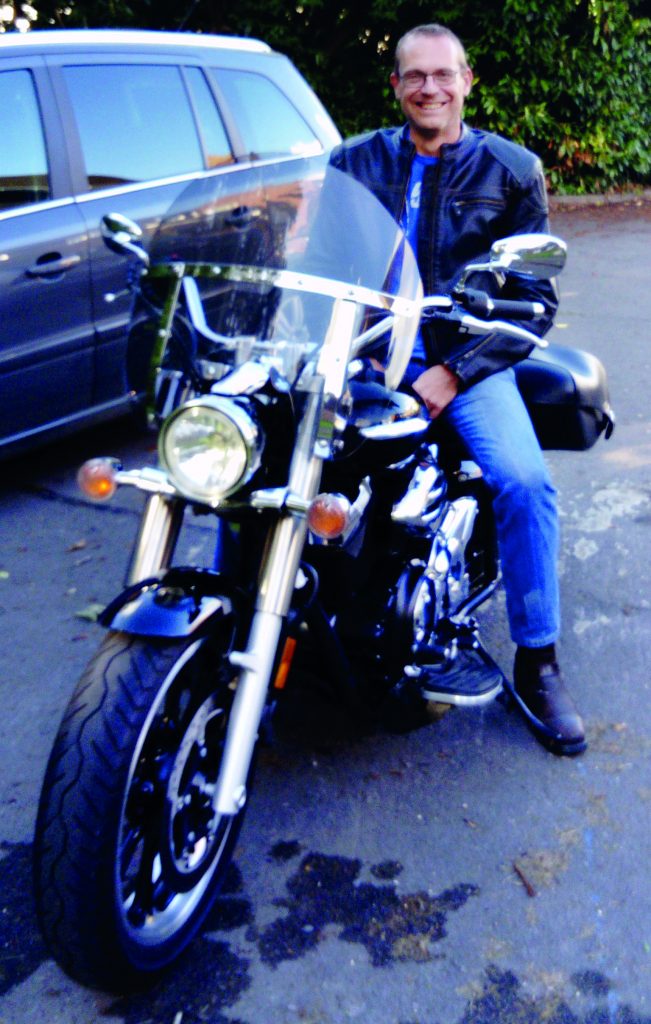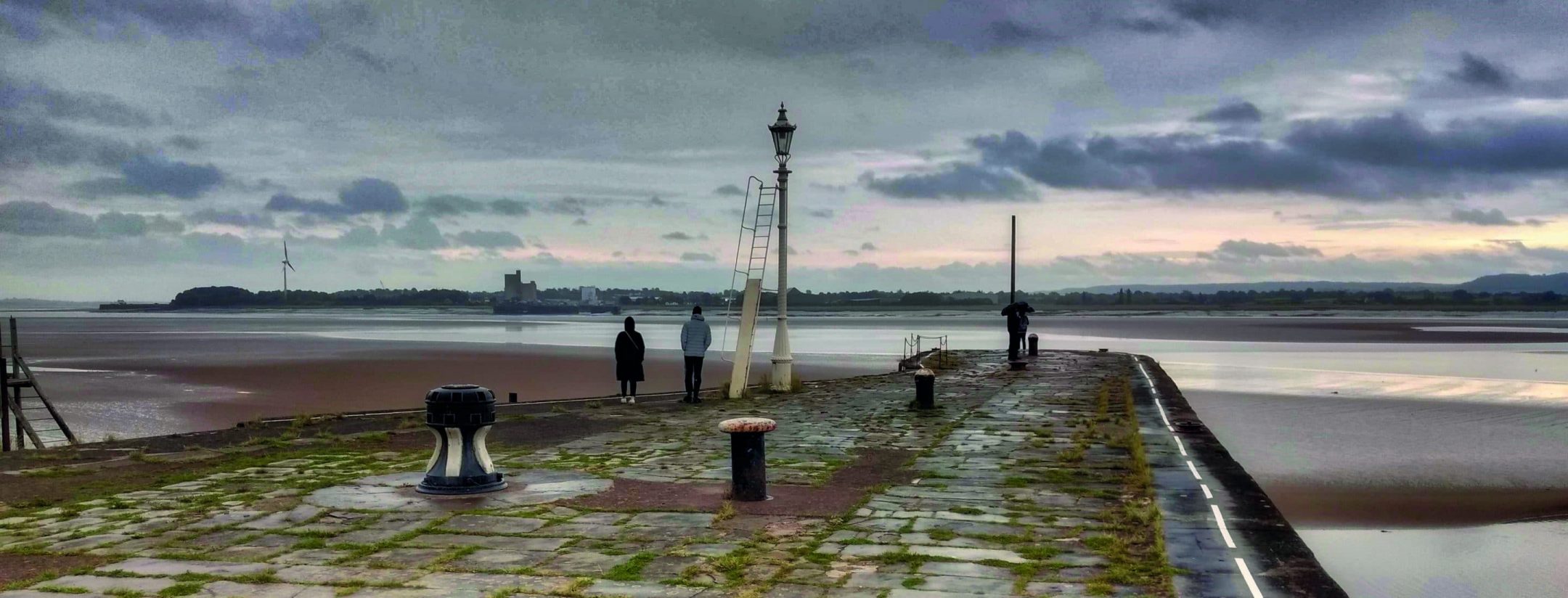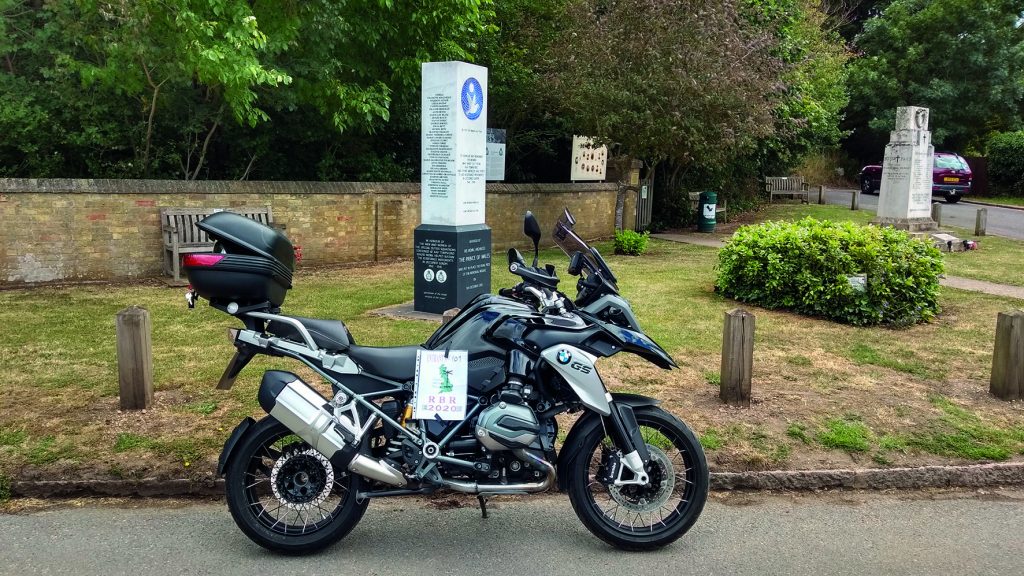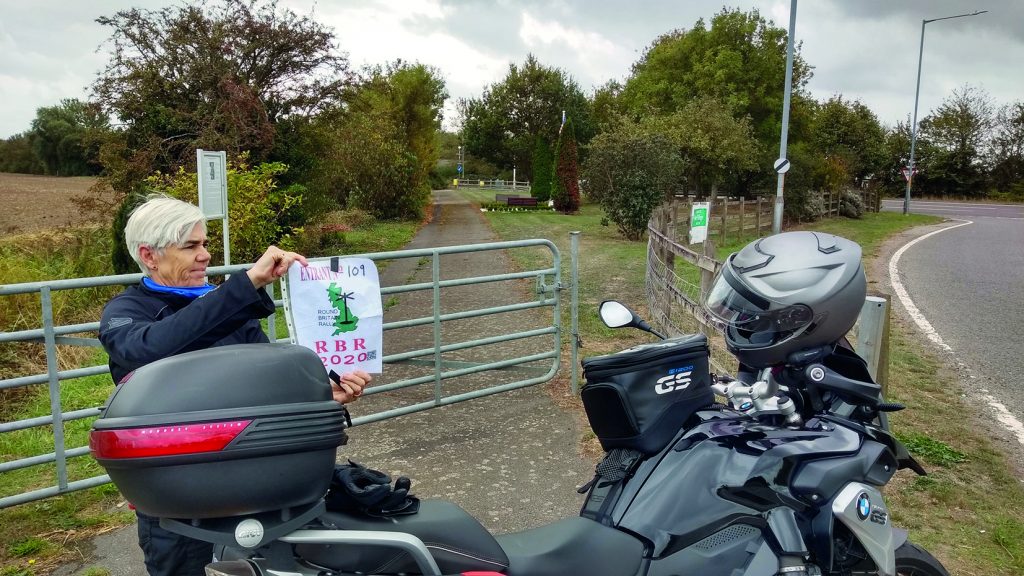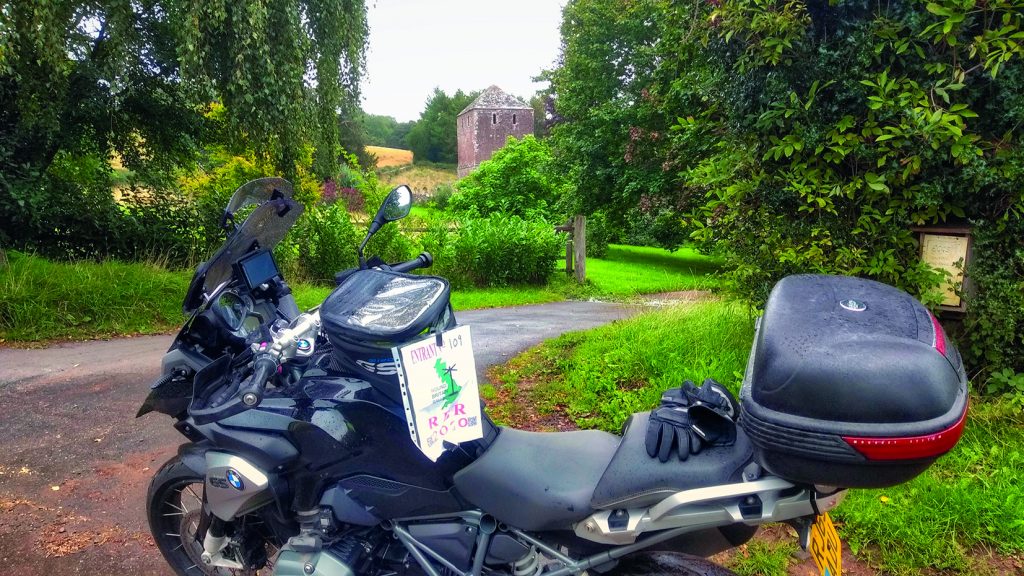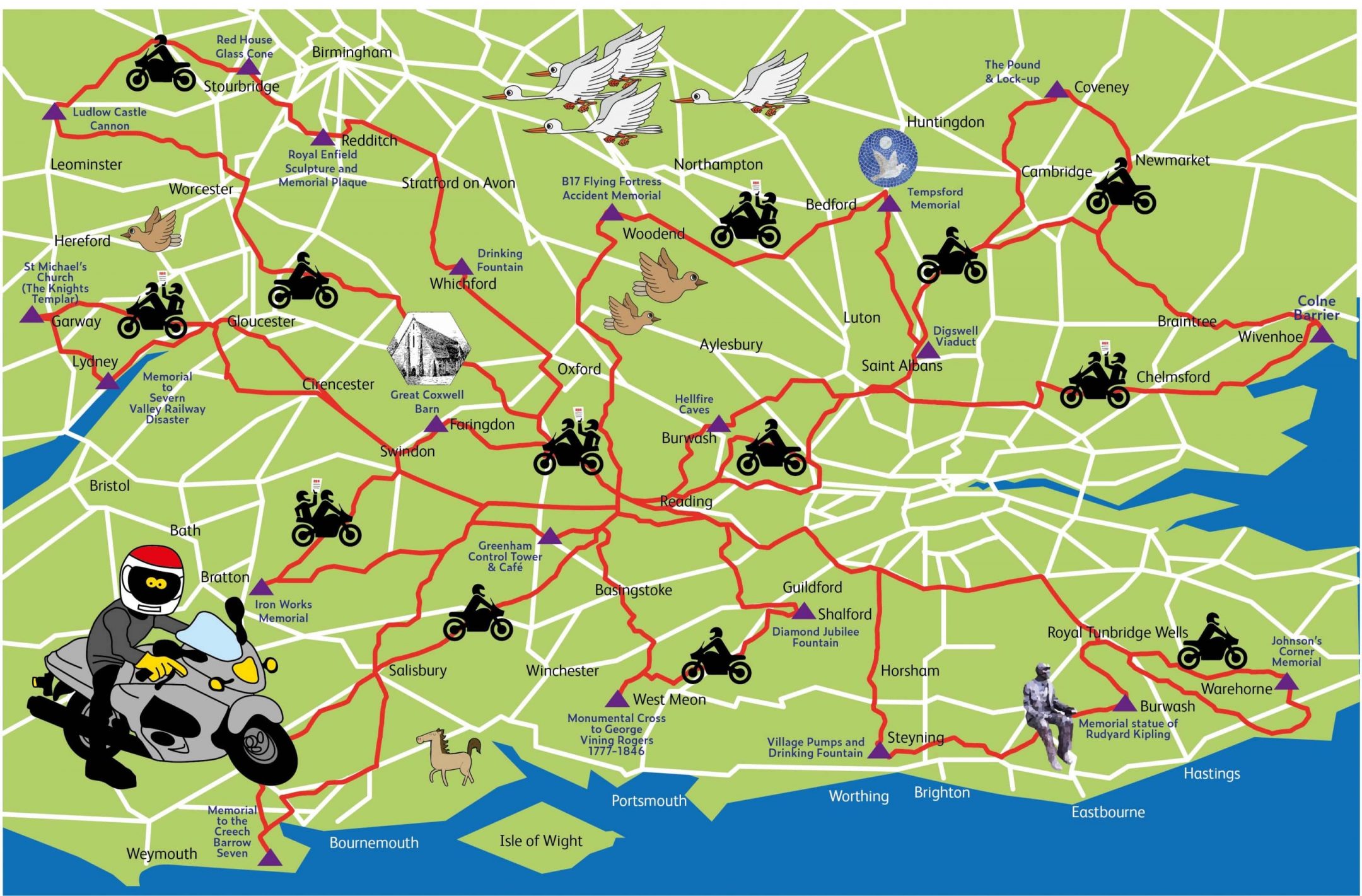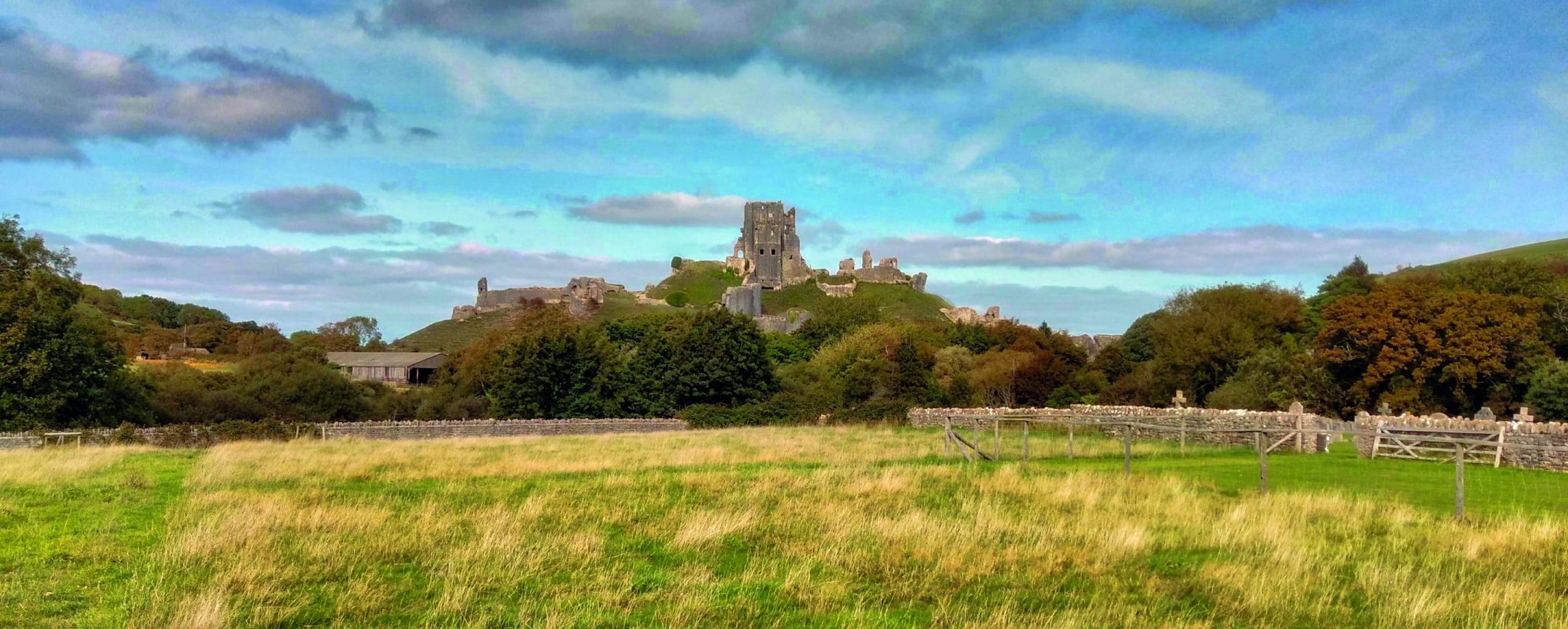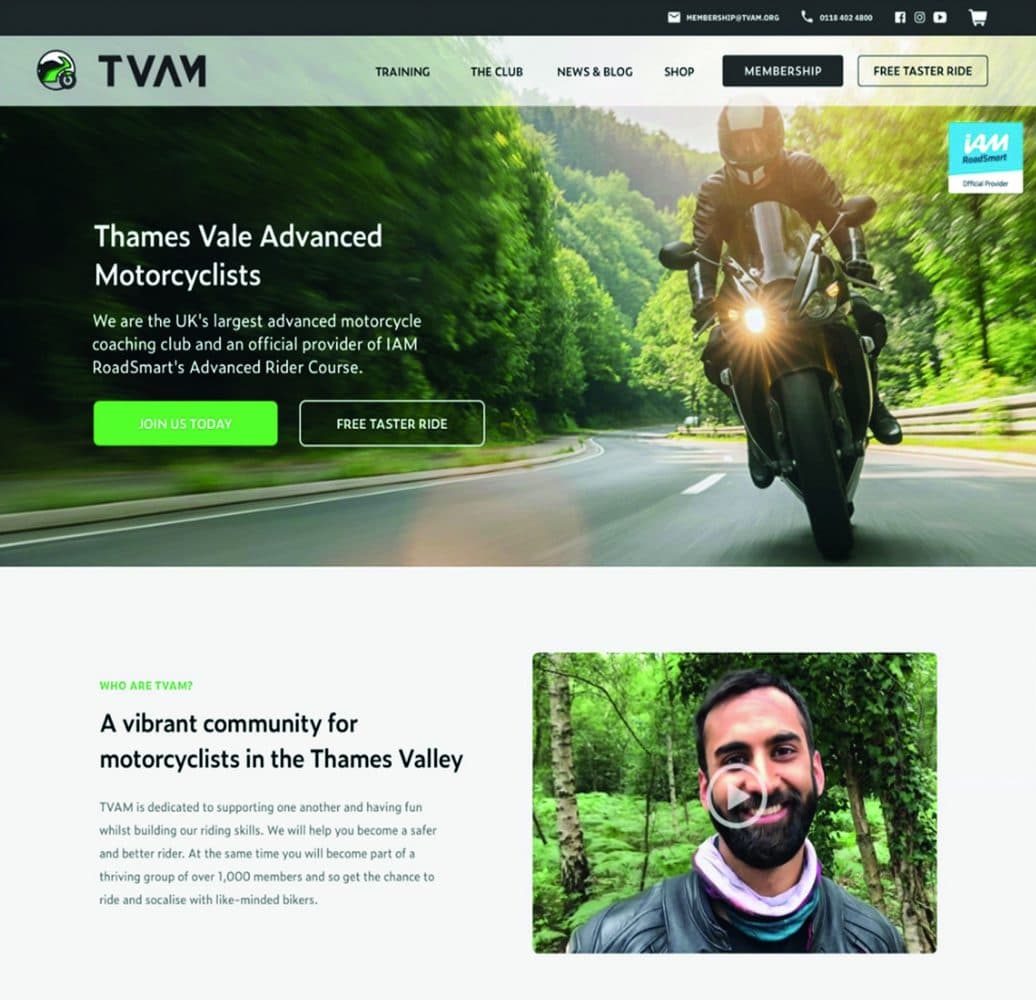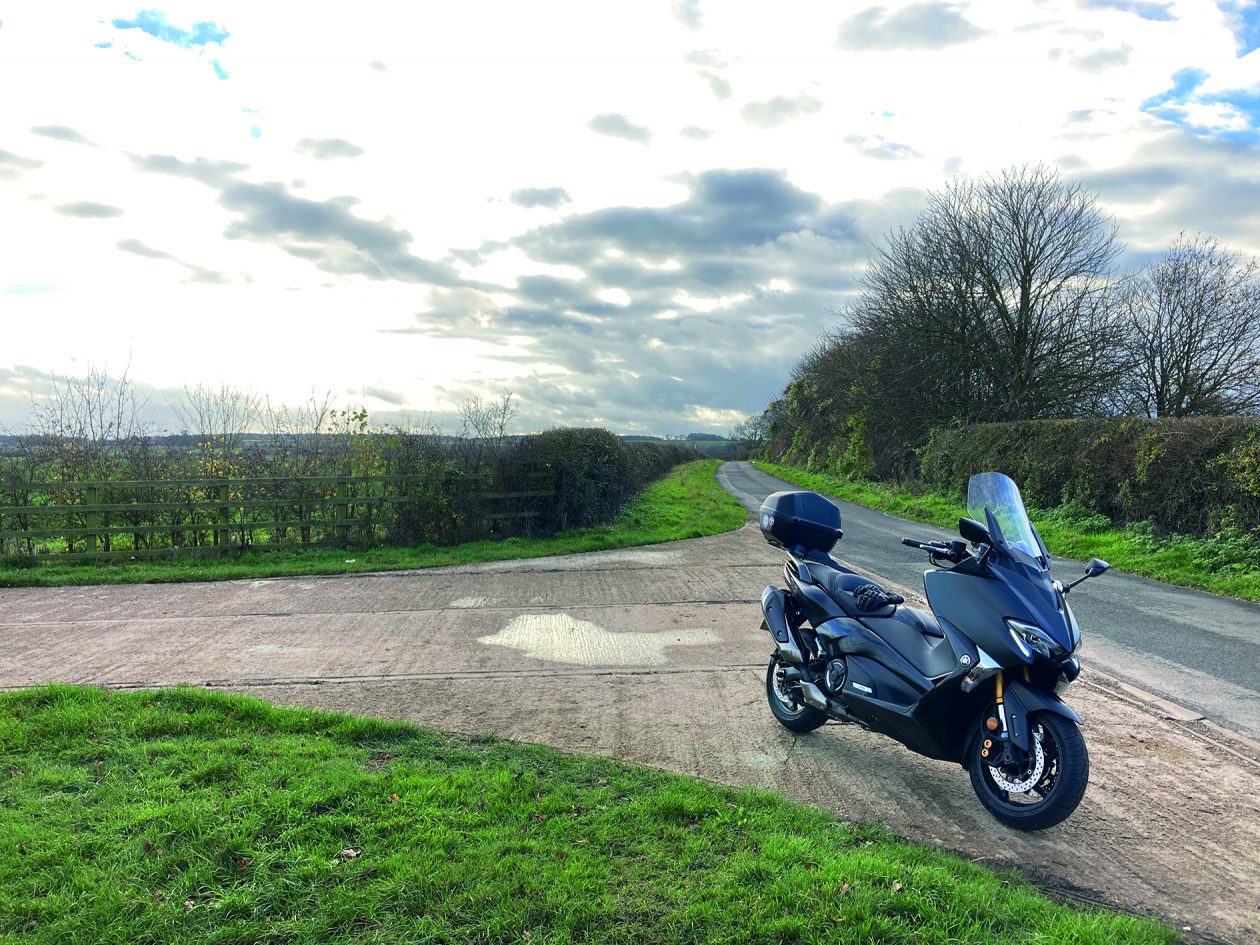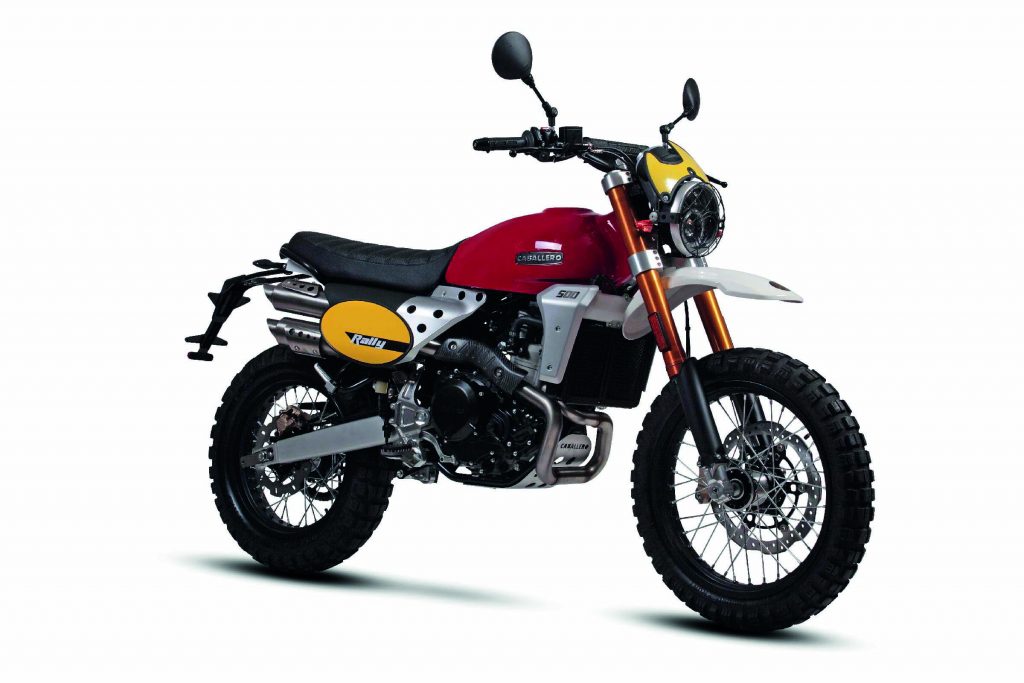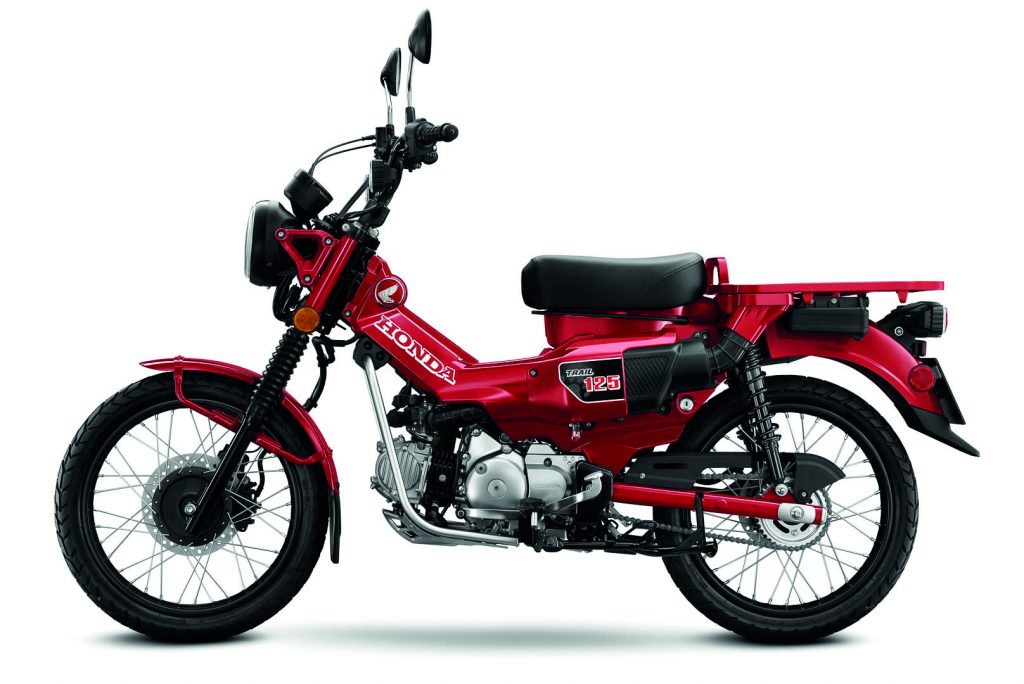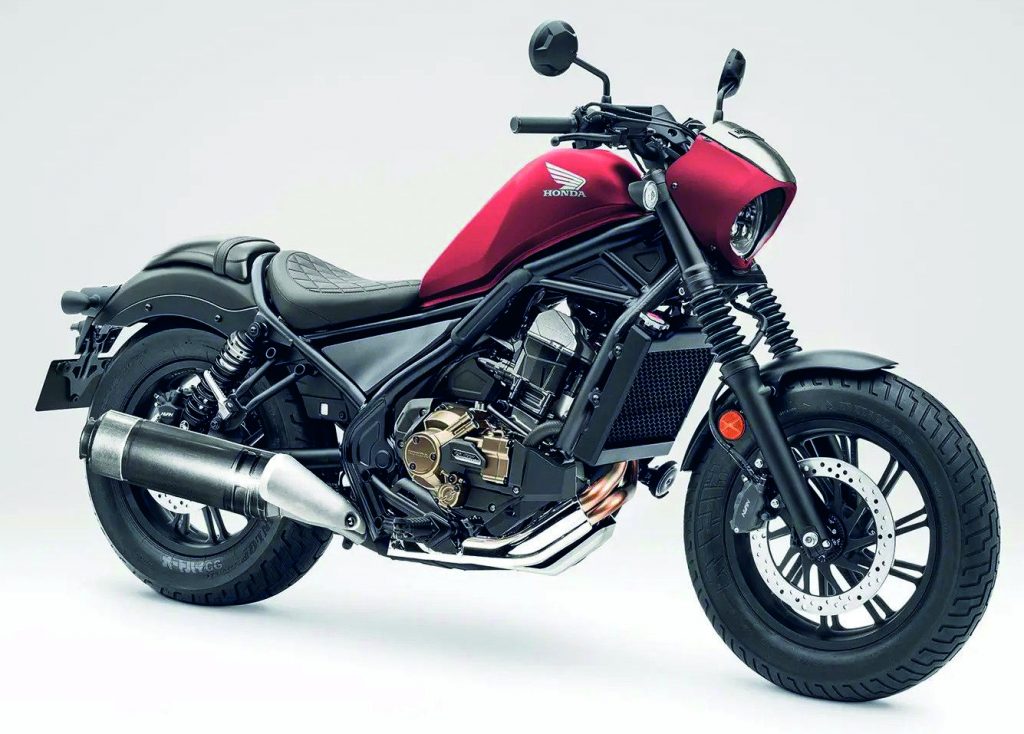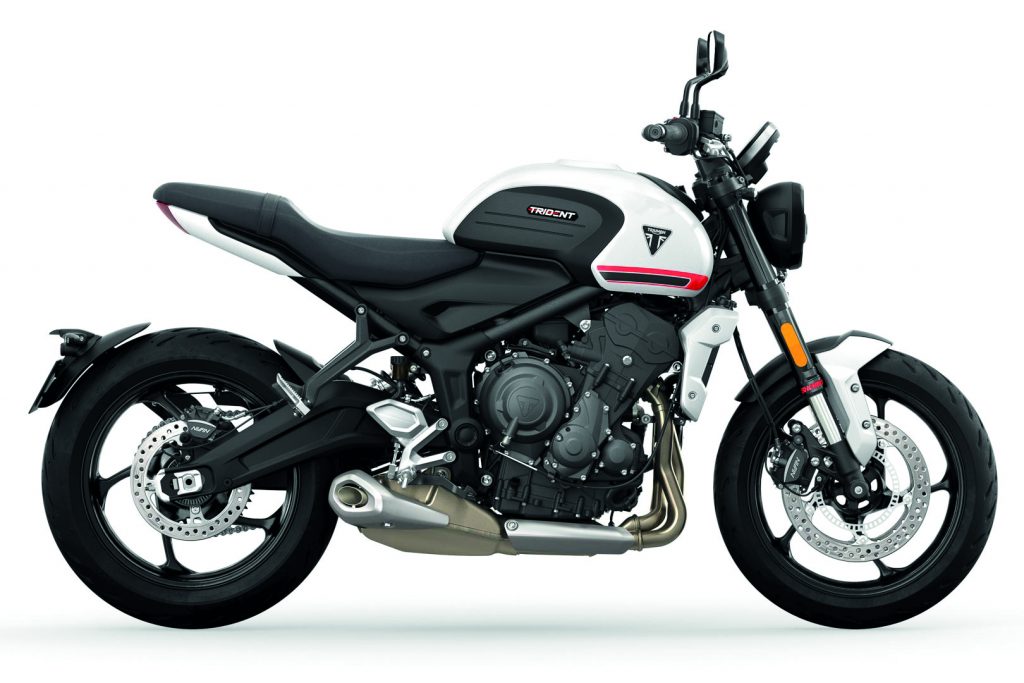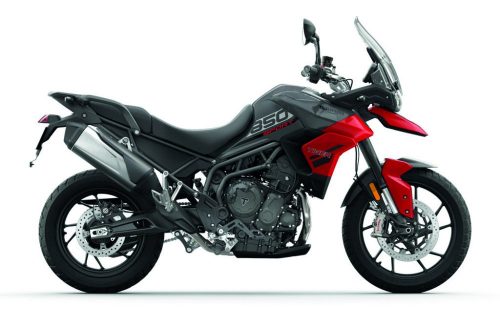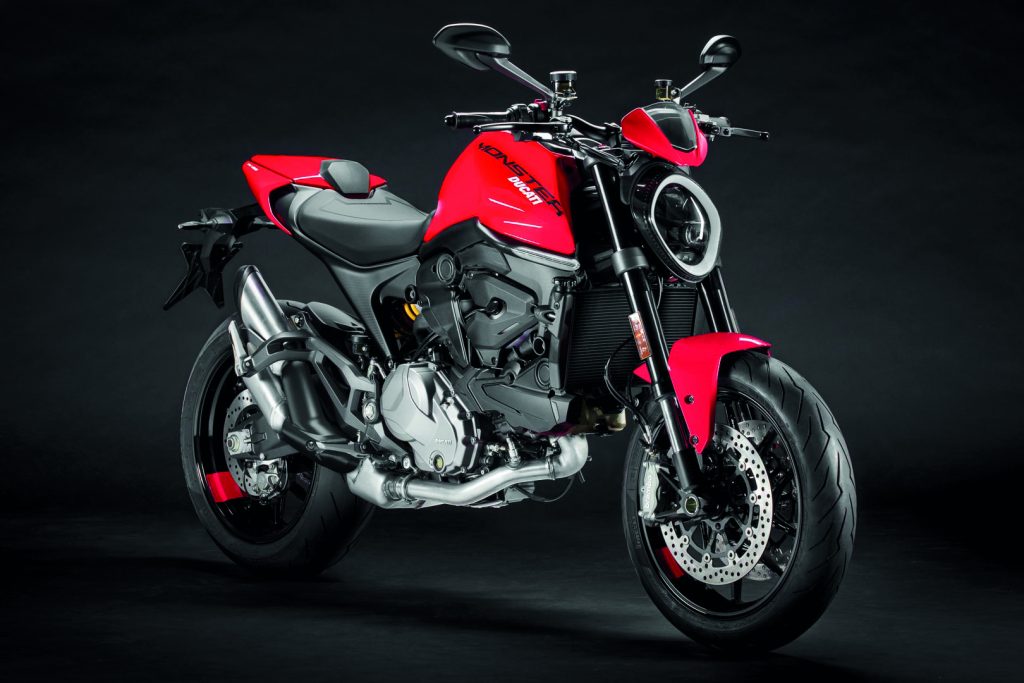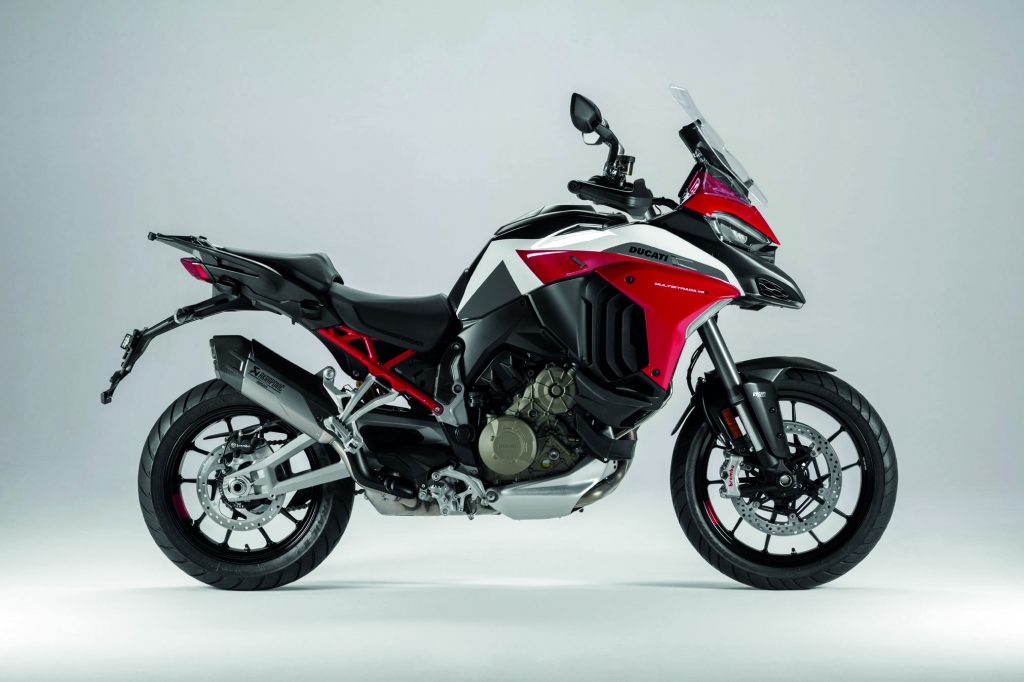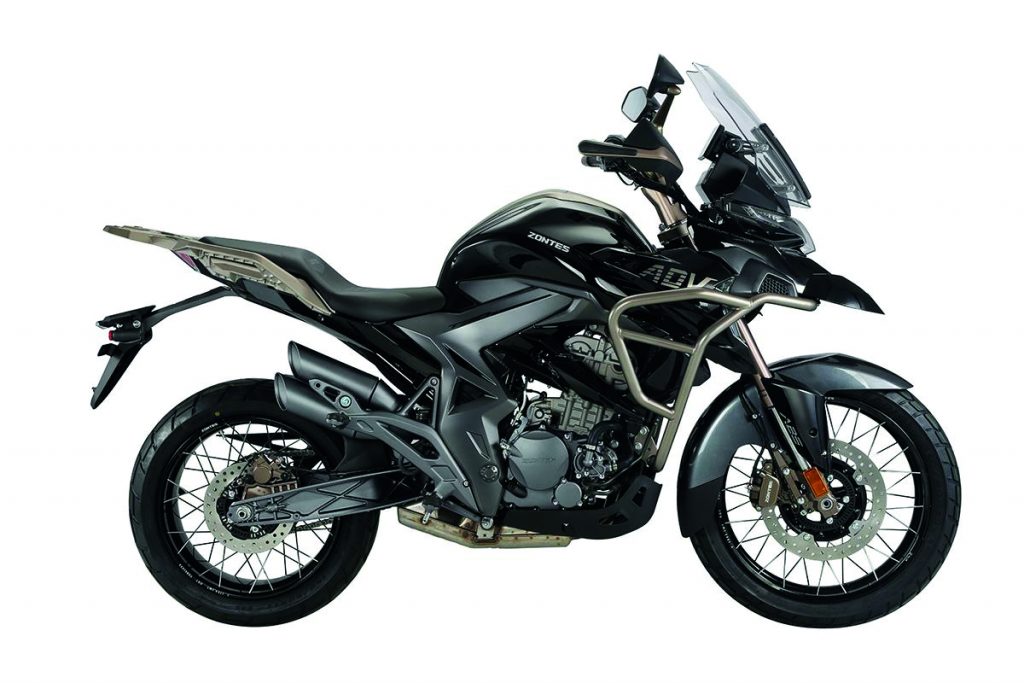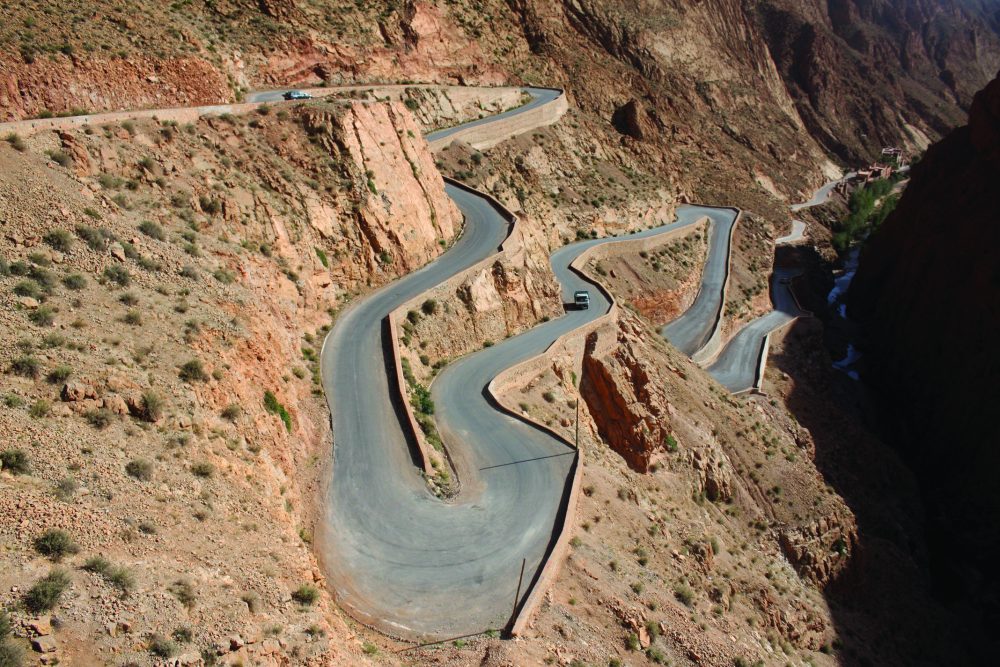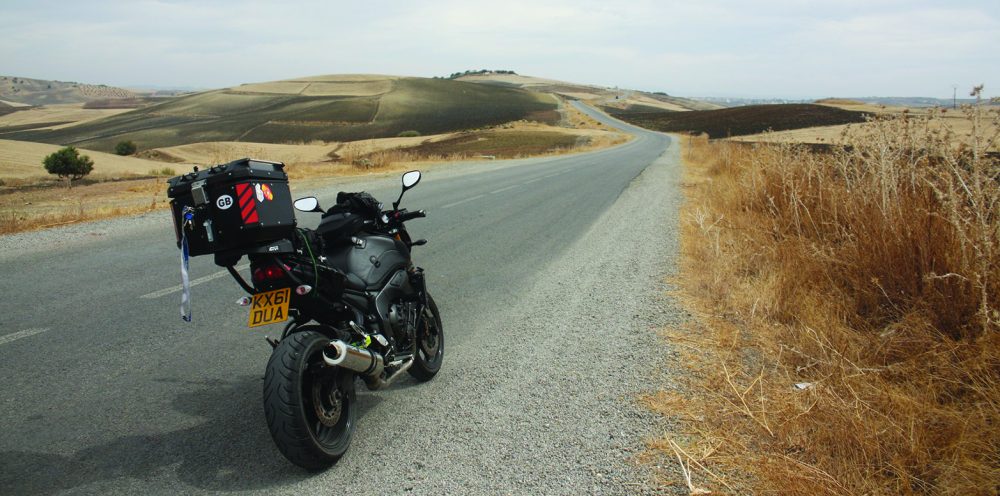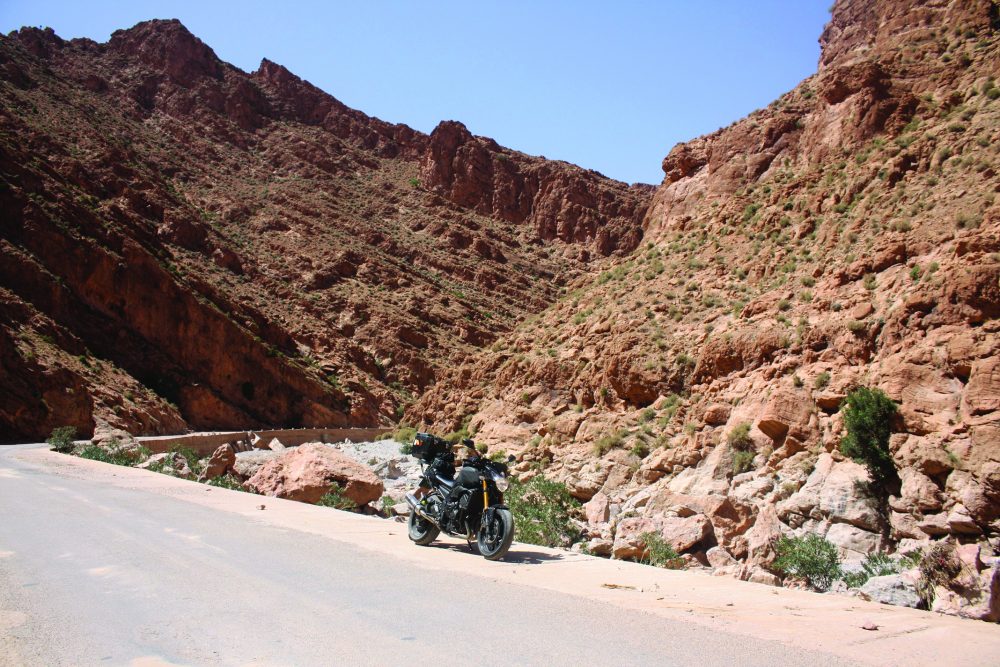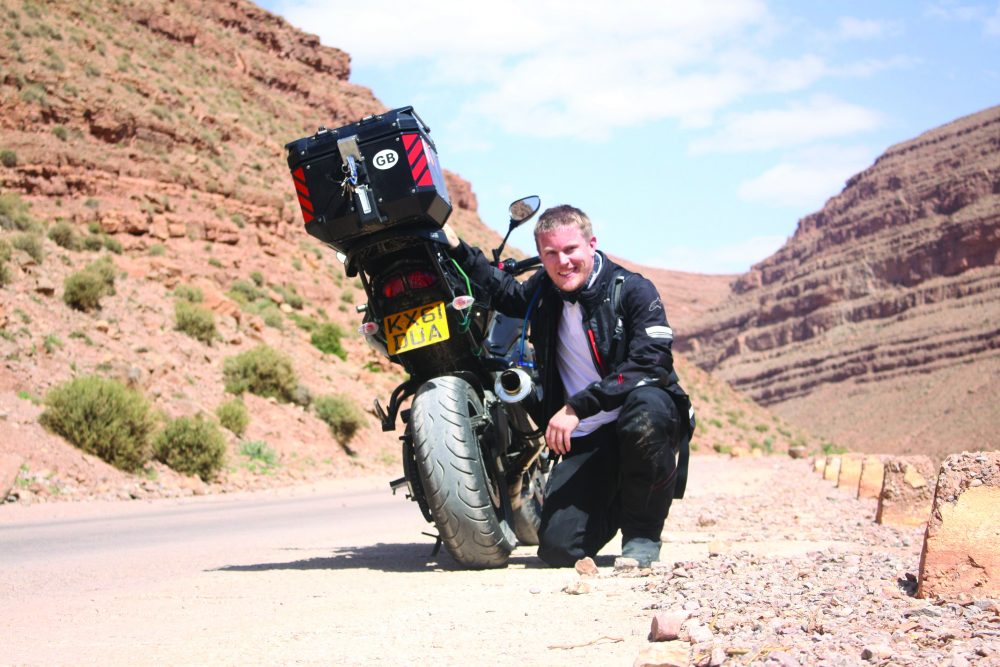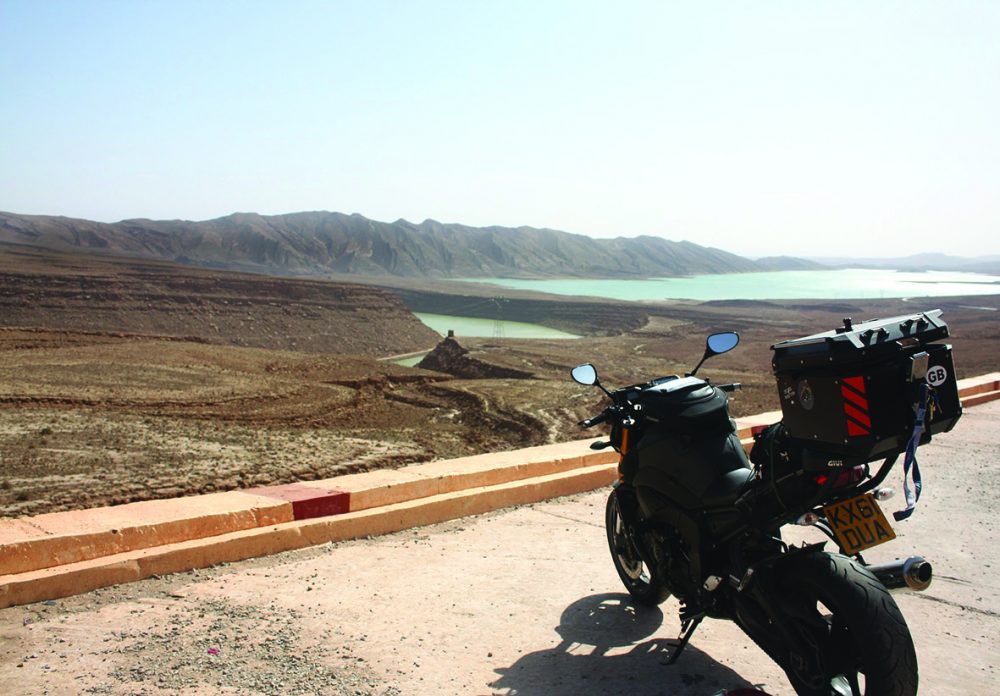Part One – How it all Began
Firstly, let’s get the introductions out of the way. My name is Jon Case and I’ve been riding for just over 3 years, and a member of TVAM for 2 years. A few years ago I reached that mid-life crisis moment. I’d had enough of the career lark, the kids were in their teens, my wife had her hobbies, and I had some personal issues that were in the process of being sorted. To that end, and thankfully with the support of my family, I packed the career in and decided to start again. I handed back the company car, gave up the sales job and went working stacking shelves in a supermarket. This turned out to be the best thing I had ever done career wise. I re-discovered happiness.
A few months into this I found myself thinking about motorbikes one day. I’d always wanted to ride a motorbike but had never learned. My father had been a surgeon in the era when helmets were not compulsory and protective gear was not a priority. He was very anti-bikes due to the number, variety and seriousness of the bike injuries he saw. So there was no chance of me being allowed to learn to ride, and then I never got round to it when I was older.
I’d always loved cruisers and always said that one day I was going to own a Harley. It was never anything but cruisers. No other type of bike interested me. This I put down to being at a very impressionable (read hormonal if you wish) age when Terminator first came out and, of course, there were those Meatloaf album covers!
It just happened – I decided I was going to learn to ride a bike. A bit of research and I was booked onto a DAS with Bike2Bike in Newbury, fortunately a very good choice. I worried about telling my Mum, but she was very supportive. I did my CBT – God knows how I passed that! I really could not get the hang of this ‘clutch with the hand’ thing and spent half my time stalled. The examiner obviously wasn’t watching when I did a wheelie out in front of a car when pulling onto the road for the first time (a buttock clenching moment, I can tell you). Before even thinking about Mod 1 I decided I needed practice. Through Bike2Bike I hired a 125 for a few days, and just spent that time out riding on quiet roads learning to control the bike and that flaming clutch. But I wasn’t enjoying it and that worried me. It felt like the slightest gust of wind would blow me over. I didn’t feel in control. It all just felt wrong.
I decided to persevere, and I did my theory, rocked that – 100% on the test and 76% on the hazard perception, and booked my Mod 1 training and test. The day of the training was a revelation. I started moving on a big bike and it was a eureka moment. This is what I had been expecting. This was what I hoped it would be. This was fun! Soon Mod 1 and Mod 2 were passed, and I was on the bike hunt.
Cruisers! Aah, they’re just great. Many will disagree but that’s the beauty and variety of biking – there’s something for everyone. The look of cruisers, the sound, the ability to mod, the lack of electronic gizmos, the feel of riding one, the low seat position, the admiring looks of passers-by (well, in my imagination anyway) – fundamentally, the feeling and the image! I soon realised though that a Harley was not what I really wanted. Lots and lots of research and Excel spreadsheets followed. For the money I had there were issues with age, reliability, value for money and the lack of performance that money would realise when buying a Harley badge versus other brands. I settled on a 2009 Yamaha XVS950A Midnight Star with 5,800 miles on the clock. This was a lot of bike for the money, and on Wednesday 13th September 2017 I proudly rode home (very tentatively – I bottled parking at the motorway services and drove straight out) and everyone was out!
Roll on a year and I was very happy with my bike, and I still am. She’s gorgeous. Whenever there is something wrong with her I end up a nervous wreck. ‘What’s wrong with her? Is she okay?’ I worry more about her being ill than the kids, but I never said that. And I’d lay money on that there’s a good few of you nodding in agreement. She has that lowdown torque, just the right amount of power for me (okay, it’s a measly 55BHP, but that does me fine, and she keeps up with more powerful bikes without the slightest problem), the wonderful sound I achieved with a new exhaust and hypercharger, the look with the removal of the pillion seat and a few carefully chosen bits of chrome bling.
The simplicity of the bike, not even a fuel gauge after having a car full of toys. A re-modelled seat to make it comfortable after more than 100 miles. The removal of the screen for non-motorway trips. The feeling and the image! I defy anyone to say they haven’t admired themselves in a shop window as they ride past! I was a happy chappy. To quote one of my colleagues at the time – ‘I’m not interested in motorbikes and I don’t like smoking, but you looked cool as **** when you rode out of work yesterday with a fag in your gob’. I can see all the heads shaking in disgust at smoking while riding, but if you position that ciggy just right, there is no ash issue!!
Anyway, I had always planned on getting an advanced riding qualification but wanted some time in the seat first. Starting to ride at my age I was extremely conscious of not having a big metal cage around me. I was also conscious that whilst I had nearly 30 years of driving experience under my belt, and knew how to handle roads and traffic, I was pretty pants at riding a motorbike. I wanted to be a lot better. A friend, John Stevens, who was a member of TVAM until he sadly died earlier this year suggested I join TVAM, so that was what I did.
I was fortunate enough to be allocated Jim Bates as my Observer. He patiently guided me and taught me a huge amount. I’d always thought I was a good driver – not great, just good, but the amount I learned from Jim was astounding, and can be credited to having saved me from one accident that I know of. I didn’t rush it as I worked weekends so it had to be fit in when I could, but in November last year I passed my Advanced test. I just missed out on a F1RST by riding too slowly! But that’s me, and I rode as fast as I personally felt comfortable doing in the pretty grotty November conditions. I’m a much better rider now (and driver actually), but still have plenty I can learn.
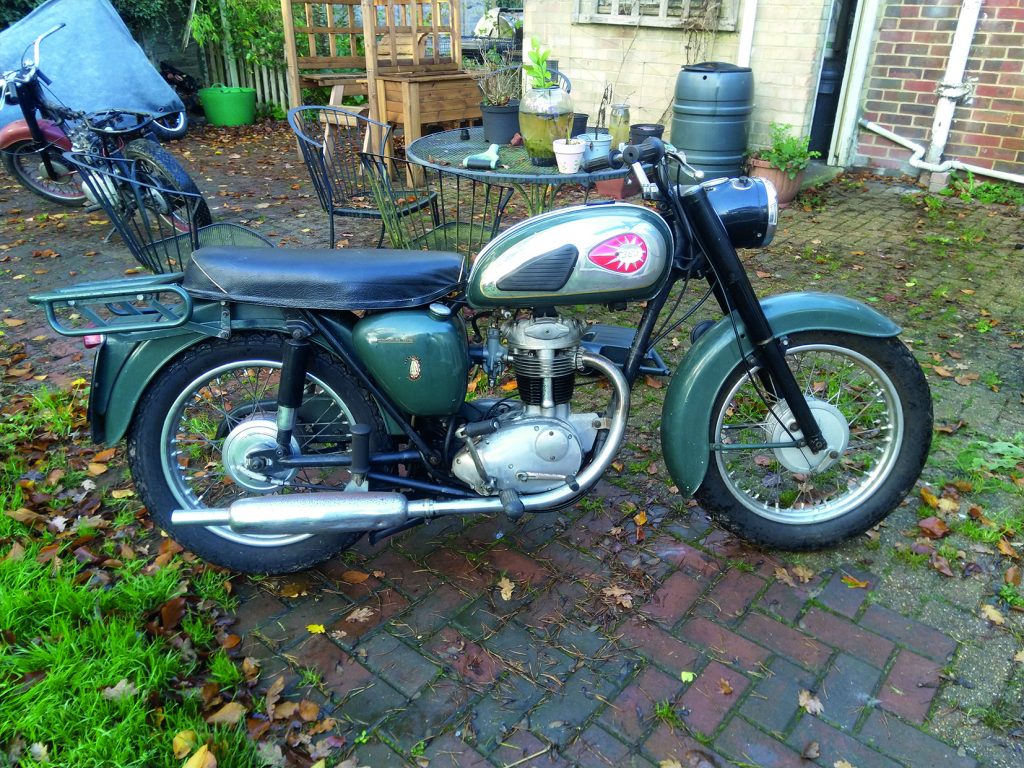
So, we finally arrive at the joys of 2020, and me actually getting to the point. I had recently changed jobs and was looking forward to getting more involved in TVAM. Doing various additional courses, going on trips and finally being able to attend St. Crispin’s Sunday. Then 2020 really kicked into gear and all plans went out the window.
I am fortunate enough to be a critical worker and in no danger of losing my job or being furloughed, but we were, and continue to be, affected by Covid. My wife’s business has suffered. My son missed college and had to have assessed BTEC grades. My daughter continues to suffer. She missed a quarter of her GCSE syllabus and still doesn’t really know if her GCSEs are going to happen. My wife’s uncle and our neighbour died of Covid, my friend John Stevens died, and then to top it all my Father-in-Law, Peter, unexpectedly died in his sleep in May.
Peter had numerous vintage bikes in his garage that had not been touched or used for years. My Sister-in-Law decided to take a BSA Bantam and a Triumph Tiger Cub, and my wife asked if I wanted two others. This kind of threw me – I knew nothing about bikes apart from how to ride them. The mysteries of an engine are exactly that to me – mysteries. They would need restoring, they hadn’t been started in at least 20 years, probably more like 25. But they’d been kept inside. Could I do it? Would I have the skills to do it? What on earth is a Rockerbox? Where would I do it? How would I learn? Ultimately, what the hell is a BSA C15 when it’s at home? The questions and doubts kept coming. But the seed had been sown.
Yes, you’ve guessed it, there were two BSA C15s available if I wanted them, a 1961 and a 1967. Time to ask the experts. I joined the BSA C15 Restoration Facebook page. I got, and continue to get, amazing advice from these people. Things like buying the bible according to BSA C15 owners – the Rupert Ratio books which look at the C15 in minute detail. Which tools I would need to get, i.e., Whitworth. I asked advice of the BSA Owners Club and found out that C15s are good bikes for a first restoration as they are relatively simple. Both bikes have matching frame and engine numbers, the 1961 still with its original paint. A couple of posts on the TVAM Facebook page yielded good advice. I picked Jim Bates’s mind on a ride out to the Sammy Miller Museum. It’s really worth a visit, a fantastic place, and if anyone wants to buy me a bike, I’ll have a Zundapp K800 please – I’d love to read Nick Tasker’s take on that bike.
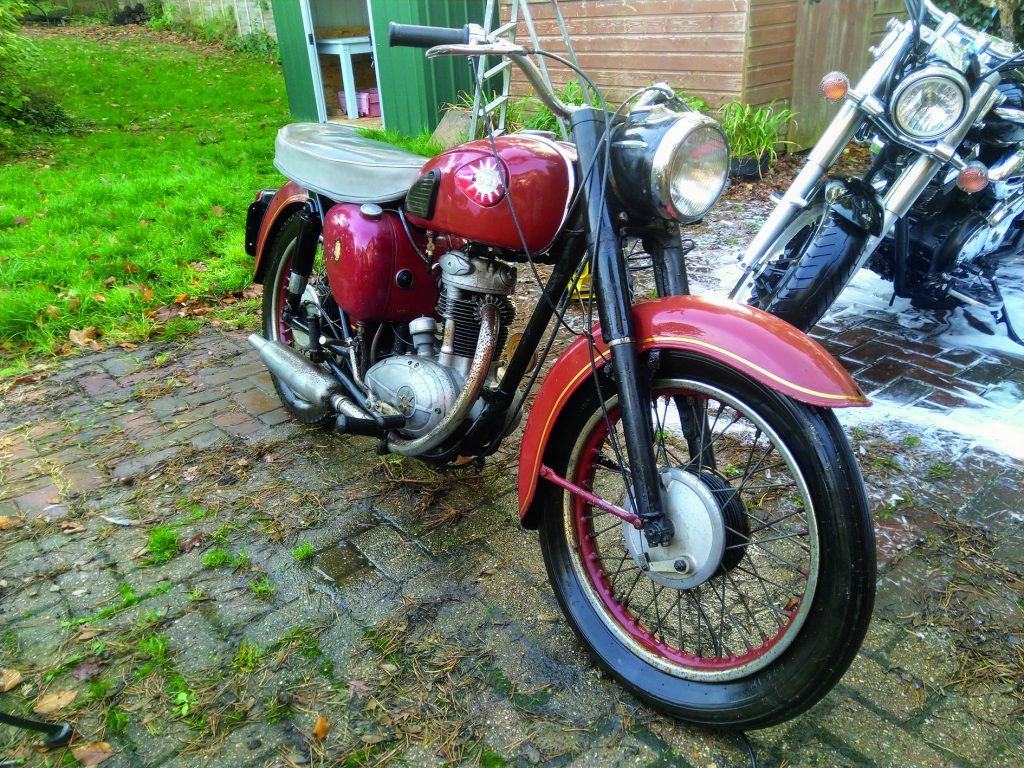
All this was answering questions, quashing doubts and pushing me more and more towards giving it a go. In the end I decided to go for it. A shed/mancave was purchased, a van was hired and then on the 1st November the bikes came to their new home.
On my first day off after bringing them home I got the bikes out of the shed, looked at them, and thought ‘Oh Good God, what have I done?’
But I have dived in there, am making good progress and learning a huge amount. I now know what a rockerbox is. So you can find out what that progress is, I will write some follow ups to this over the next few months to let you know how I’m doing, what adventures I’m having, my successes and my failures. It won’t necessarily be every month as I do have to earn the money I’m spending on them, and it’s a slow process being my first restoration. I am having a thoroughly enjoyable time though and hope you will enjoy reading about it. The strip down of the first bike is well progressed, so next month I’ll give you an update. Bye for now, and stay safe.
Jon Case
First published in Slipstream January 2021

